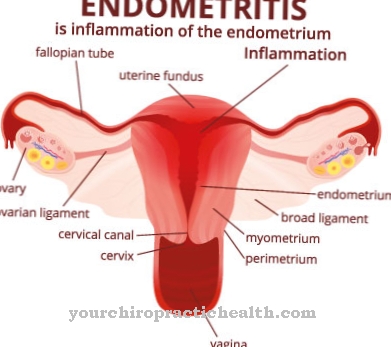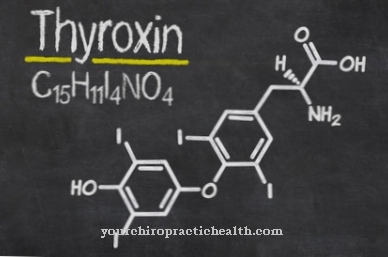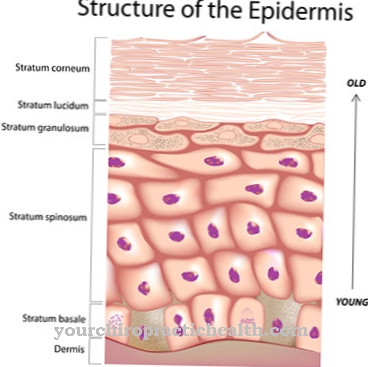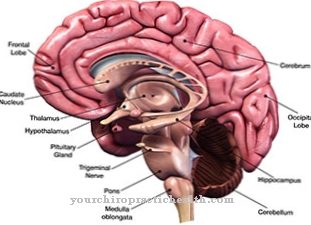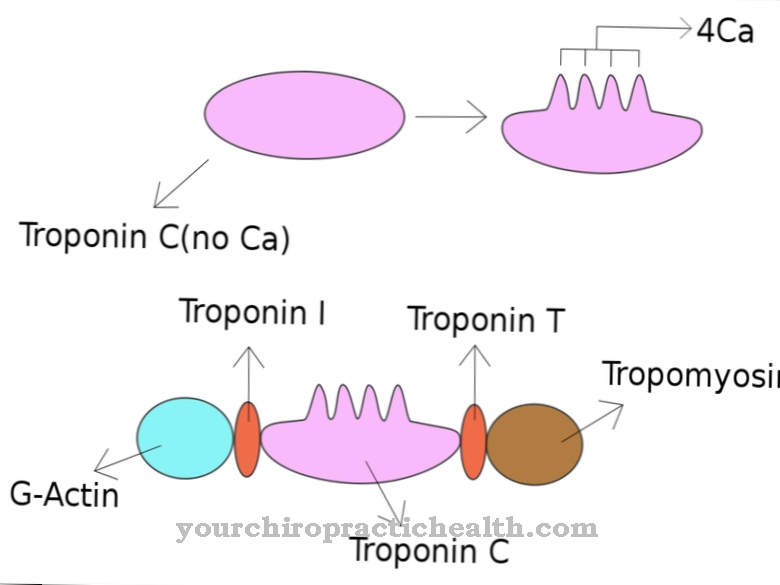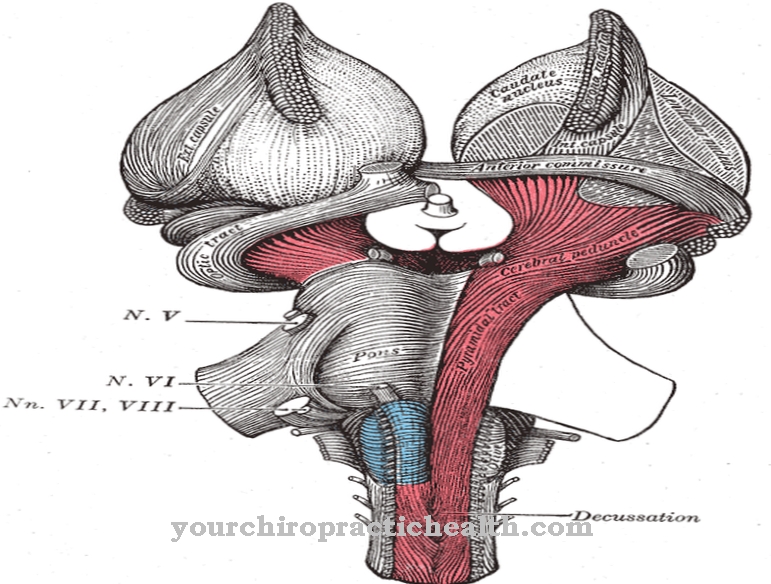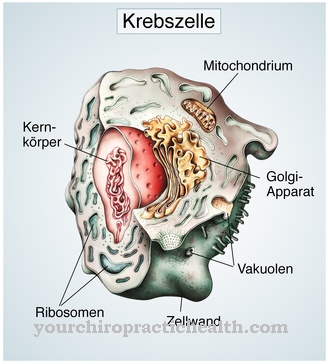Drooping eye skin or eyelids filled with fat are not only a visual problem, they can also obstruct the view. We're talking about the Dermatochalasiswhich can occur due to an illness or family-related. In almost all cases, the affected person must be treated surgically.
What is dermatochalasis?

© imagesbykenny - stock.adobe.com
The medical professional describes a change in the connective tissue as a dermatochalasis. The change is age-related, and familial clusters have also been observed. The term dermatochalasis occurs not only in ophthalmology, but also in the field of dermatology.
Characteristic are sagging, large and inelastic wrinkles, which are nothing more than "sagging skin" that can appear on different parts of the body. Above all, those affected complain about the sagging skin on the eyes or patients are often affected by bags under the eyes or drooping eyelids. Dermatochalasis is - strictly speaking - an age-related misalignment of the eyelid.
causes
Due to the fact that the connective tissue slackens with age, the process arises that fat is deposited in the tissue layers. As a result, the skin bulges forward and the skin begins to sag. Possible causes are, for example, inherited (so-called hereditary) diseases of the connective tissue, whereby doctors also speak of a cutis laxa syndrome.
However, idiopathic recurrent swellings of the upper eyelids (blepharochalasis) and age-related reasons (cutis laxa senilis) can trigger dermatochalasis. Sometimes inflammatory skin diseases (dermatitis) can also promote dermatochalasis. Dermatochalasis can also occur during pregnancy; especially if the pregnant woman is taking penicillamine (cutis laxa acquisita).
Symptoms, ailments & signs
The slackening of the connective tissue primarily ensures that the skin of the upper eyelid is no longer tight and that the excess skin that has formed due to the fat deposits protrudes over the edge of the eyelid. The person affected not only complains about aesthetic problems, but can sometimes also feel stronger resistance when he wants to open his eyes.
Subsequently, those affected suffer from headaches; this condition is triggered, for example, by the fact that a significantly higher effort is required if the patient wants to open the eye. Occasionally, however, an enormous restriction of the field of vision can arise when the eyelid becomes “bigger and bigger”. If that happens, the cosmetic problem turns into a medical problem, with the ophthalmologist usually responsible for such treatments and diagnoses.
At the latest when the impaired vision is perceived as annoying, a doctor should be consulted immediately who will examine or treat the dermatochalasis.
diagnosis
The ophthalmologist can - as part of an ophthalmological examination - make the diagnosis of dermatochalasis. It is important, however, that a differential diagnosis is made so that the suspicion of dermatochalasis can also be confirmed.
It is important that diseases such as Williams-Beuren syndrome, Ehlers-Danlos syndrome, progeria (also known as Hutchinson-Gilford syndrome), Barber-Say syndrome, Costello syndrome, Kabuki syndrome, pseudoxanthoma elasticum or the cardio-facial-cutaneous syndrome can be excluded.
During the diagnosis, therefore, careful attention must be paid to the eyelids, so that the position of the edge of the eyelid is particularly relevant. However, if the patient's eyelid margin is unchanged or if it is merely covered by the skin, it is a case of dermatochalasis; Ptosis can thereby be excluded. The doctor also takes a measurement of the visual field so that any visual field defects can be assessed.
Often the doctor can already express the suspicion on the basis of the optical examination that there is a dermatochalasis. The course is based on its cause. As a rule, if the dermatochalasis causes not only aesthetic but also medical problems, over time the affected person must be treated surgically.
Complications
In most cases, dermatochalasis has both cosmetic and physical complications. In addition to reduced aesthetics, the patient's vision is also prevented due to the enlarged eyelids. The patient has to make more effort to open the eye. Due to the increased strength, there is also often a headache.
These can spread to the neighboring regions, so that teeth or ears are also affected by pain, although there is no causal complaint in these regions. The view is also severely restricted, which can lead to significant restrictions in the everyday life of the person concerned. The diagnosis of dermatochalasis can be made and usually needs to be treated immediately.
If the condition is acute and serious, surgery can be carried out. This usually runs without complications. If no intervention is necessary, the underlying disease can also be treated with physiological methods. Here, too, there are no further complications and the disease progresses positively. Small scars often remain on the eye after the operation. Dermatochalasis does not reduce life expectancy.
When should you go to the doctor?
Whether and what the patient himself can contribute to improving his or her condition depends on what the dermatochalasis is due to and how severe the condition is.
In the early stages, the patient can try to combat the disorder with the help of special gymnastic exercises for the face and eyes. Connective tissue massages can also have a positive effect.
If the droopy eyelids are caused by dermatitis or other inflammatory skin diseases, warm eye showers or cold compresses can help. If the upper eyelids are severely swollen, placing ice cubes, which are wrapped in a paper tissue, helps. Dabbing eyebright tea, which has previously been placed in the freezer for some time, is also helpful. Placing ice-cold cucumber slices on top of the songs also often leads to the songs swelling.
If the disorder is due to an allergy, the allergen must be identified and avoided. In the case of various food intolerances, a general change in diet can be useful. In naturopathy, this is usually recommended as a therapy method for chronically swollen eyelids.
In severe cases, especially if the dermatochalasis is genetic or age, only surgery will help. Since the procedure is only associated with manageable risks, patients who are physically or mentally suffering from the disorder should inform themselves promptly about the possibility of surgical treatment.
Doctors & therapists in your area
Treatment & Therapy
As part of the treatment, the doctor must consider the cause. There are different therapeutic approaches depending on the cause; On the one hand, there are conservative options that include gymnastics, connective tissue massages or hot and cold showers, but also surgical treatments. This includes blepharoplasty, for example. It is advisable that - if there is an underlying disease that has caused dermatochalasis - mainly only the symptoms or the cause - in the sense of the underlying disease - is treated.
If the doctor decides on the most common variant - i.e. the surgical procedure - he removes the excess skin. The patient is cared for using local anesthesia; the correction takes around 45 minutes (for both eyes). The doctor removes the excess skin for the first time and, secondly, the excess fatty tissue that has formed. After five to six days, the doctor will remove the sutures. Bruises, which can very well occur, will heal in around one to two weeks.
The procedure leaves a very fine and gentle scar, which lies directly in the crease of the eyelid and is not visible. Before the operation, of course, a detailed informative discussion must take place, in which the patient not only expresses his wishes, but at the same time the doctor also reports on risks and other side effects that are - at least theoretically - possible within the scope of an operative intervention.
Outlook & forecast
In dermatochalasis, there is usually no self-healing and no improvement in symptoms if the disease is not treated. For this reason, those affected always need medical treatment to treat this disease.
If the dermatochalasis is left untreated, people will suffer from heavy deposits of fat on the eyelids and difficulty opening and closing their eyes. These complaints have a negative impact on the patient's quality of life and can reduce it. There are also restrictions in the field of vision and thus in everyday life. Often those affected also suffer from headaches and visual problems due to dermatochalasis.
Dermatochalasis can usually be treated relatively easily. A surgical procedure removes the deposits so that the symptoms are completely resolved. There are no particular complications, so the disease progresses positively. However, a small scar remains. Surgical intervention is not always necessary, so that in some cases the dermatochalasis can also be treated with massages or hot and cold showers. This can also lead to a positive course of the disease.
prevention
As a rule, dermatochalasis cannot be prevented. This is because in the majority of cases other diseases are responsible for the dermatochalasis. Even if dermatochalasis has already occurred in the family, there are no preventive measures.
Aftercare
In the case of dermatochalasis, the person concerned is usually only entitled to very few or even no measures or options for follow-up care. Since the disease cannot be completely treated in many cases, the person affected is primarily dependent on early and rapid detection and subsequent treatment of the disease.
The dermatochalasis cannot heal independently, so treatment is necessary in every case. The earlier the dermatochalasis is detected, the better the further course of this disease is usually. The treatment is usually carried out with the help of surgical interventions.
This should be done as early as possible. After such an operation, the person affected should usually always rest and continue to take care of their body. Bed rest must always be observed. You should also refrain from exertion or stressful activities.
The procedure for dermatochalasis usually takes place without complications and leads to an almost complete healing of the symptoms. The life expectancy of the person affected is also not reduced. Since the disease can often lead to mental upsets or to depression, accompanying psychological treatment is recommended.
You can do that yourself
Dermatochalasis does not always require medical treatment. Depending on the cause, there are different therapies, some of which can be carried out without medical assistance. In mild cases, the skin changes can be treated with gymnastics or connective tissue massages. Cold and warm showers help primarily with swelling of the upper eyelids and skin changes as a result of inflammatory skin diseases such as dermatitis.
In general, classic face masks with quark or cucumber are also said to have a preventive effect. Homeopathic remedies such as healing earth or the Schüssler salts No. 6 and No. 9 help with allergy-related dermatochalasis. Dermatochalasis during pregnancy can be treated by changing the medication (usually the drug penicillamine is the cause).
If the sagging of the eyelids is age-related, the dermatochalasis usually has to be surgically removed. A change in diet or lifestyle changes (e.g. more sleep or fewer luxury foods) prevent new skin changes. However, the dermatochalasis is partly genetic, which is why relaxation cannot always be prevented. In severe cases, a [psychologist psychological counseling]] can therefore be useful. Those affected should discuss with the responsible doctor which measures are possible in detail.


.jpg)
.jpg)
.jpg)

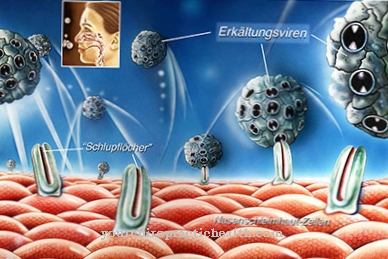


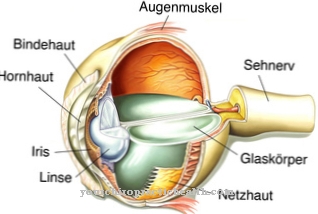
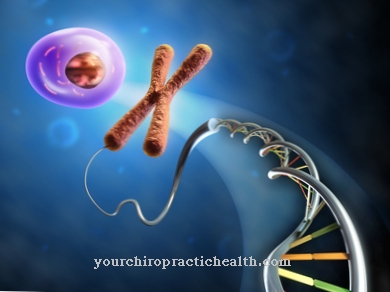

.jpg)

